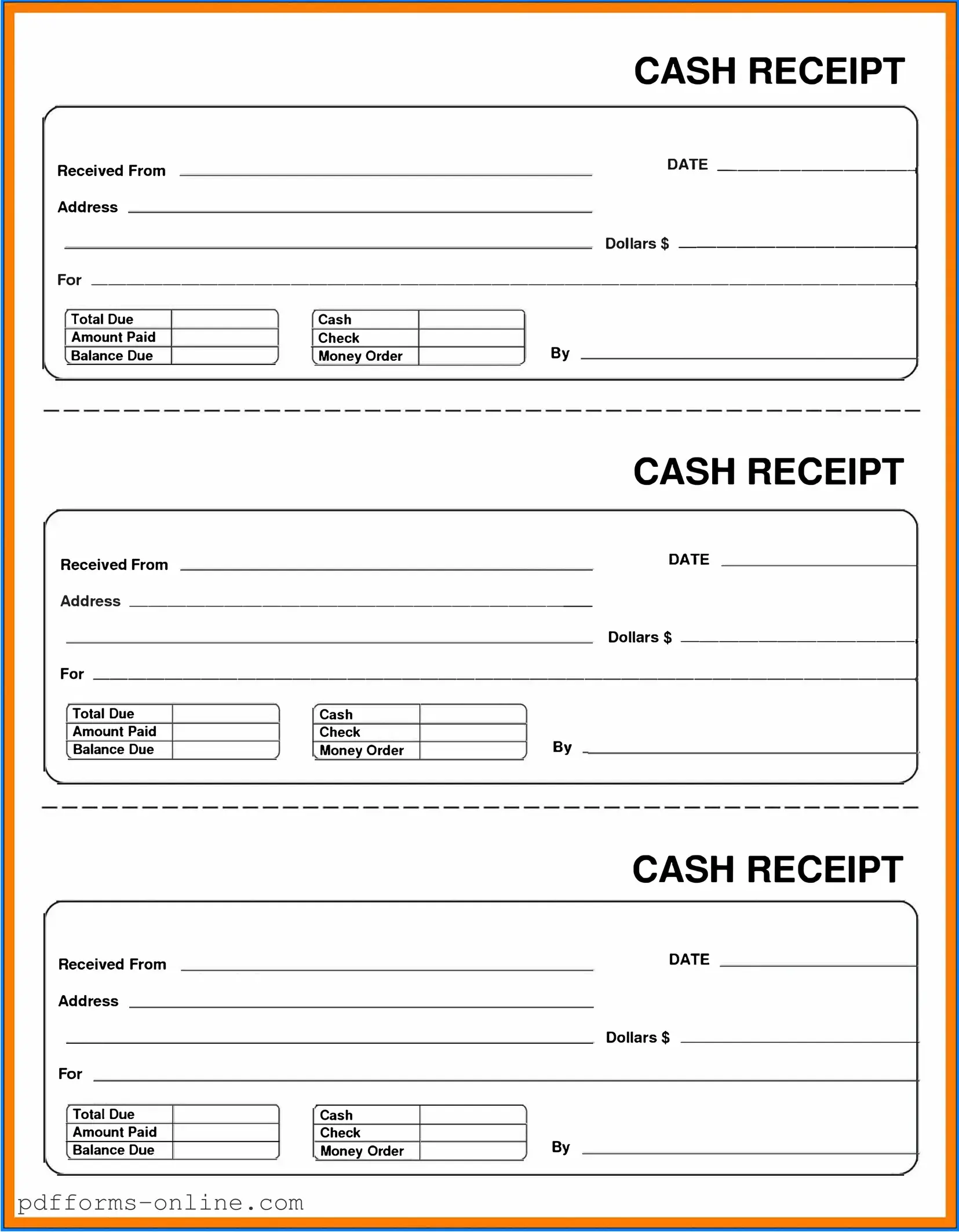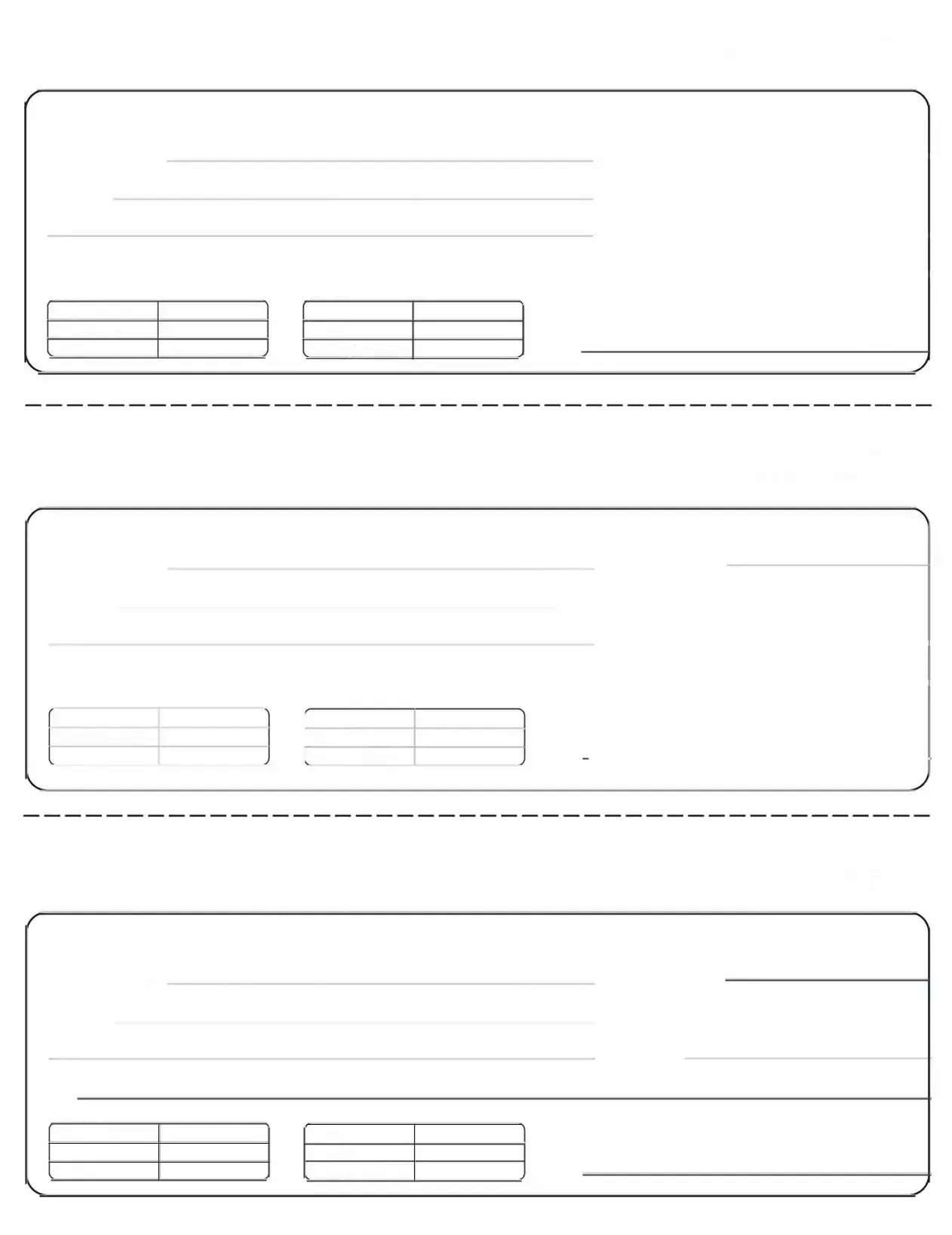The Cash Receipt form bears resemblance to the Invoice document, which serves as a request for payment. Both documents detail the transaction between a buyer and a seller, outlining the goods or services provided along with the corresponding amounts due. While the Cash Receipt confirms that payment has been received, the Invoice initiates the payment process, creating a clear link between the two. Each document plays a crucial role in tracking financial exchanges and maintaining accurate records for accounting purposes.
Another document similar to the Cash Receipt is the Sales Receipt. This document is issued to customers at the point of sale, providing proof of purchase. Like the Cash Receipt, it confirms that a transaction has been completed and typically includes information such as the date of purchase, items sold, and the total amount paid. Both documents serve to validate the exchange of money for goods or services, although the Sales Receipt is often used in retail settings where immediate payment occurs.
The Payment Voucher also shares characteristics with the Cash Receipt form. This document is used to authorize payments and often includes details about the transaction, such as the amount, purpose, and recipient. While the Cash Receipt confirms receipt of funds, the Payment Voucher facilitates the disbursement of funds. Both documents are essential for financial tracking and ensuring accountability in financial transactions.
In addition, the Deposit Slip is akin to the Cash Receipt, as it records the deposit of cash or checks into a bank account. Both documents are used to confirm that funds have been received, though the Deposit Slip is specifically related to banking transactions. It typically includes information about the source of the funds, similar to how a Cash Receipt details the transaction context.
The Credit Memo is another document that parallels the Cash Receipt form. Issued by sellers to inform buyers of a reduction in the amount owed, the Credit Memo often arises from returns or adjustments. While the Cash Receipt confirms payment, the Credit Memo indicates that a credit has been applied, thus affecting the overall transaction history. Both documents are vital for maintaining accurate financial records.
In addition to the documents discussed, it's important to consider the Operating Agreement for Limited Liability Companies (LLCs) in Arizona, which serves a vital role in defining the operational structure and member responsibilities within the business. A well-drafted agreement can help prevent misunderstandings and disputes among members. For those looking for comprehensive resources to assist in creating this document, All Arizona Forms can provide essential templates and guidance for ensuring compliance with state regulations.
Furthermore, the Purchase Order can be considered similar to the Cash Receipt in that it outlines the details of a transaction prior to payment. A Purchase Order is generated by the buyer to authorize a purchase, specifying quantities, prices, and terms. While the Cash Receipt serves as proof of payment received, the Purchase Order initiates the transaction, making both documents integral to the procurement process.
The Expense Report also shares similarities with the Cash Receipt form. This document is used by employees to request reimbursement for out-of-pocket expenses incurred on behalf of the company. Both documents include details about transactions and require supporting information to validate the expenses or payments made. While the Cash Receipt confirms incoming funds, the Expense Report documents outgoing funds, highlighting their interconnected nature in financial reporting.
Lastly, the Statement of Account is comparable to the Cash Receipt as it summarizes all transactions between a buyer and seller over a specific period. This document provides an overview of outstanding balances, payments received, and any credits applied. While the Cash Receipt focuses on individual transactions, the Statement of Account offers a broader perspective on the financial relationship, making both essential for comprehensive financial management.

